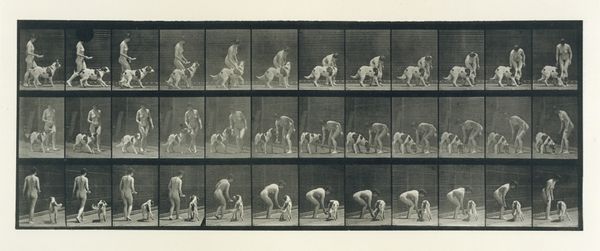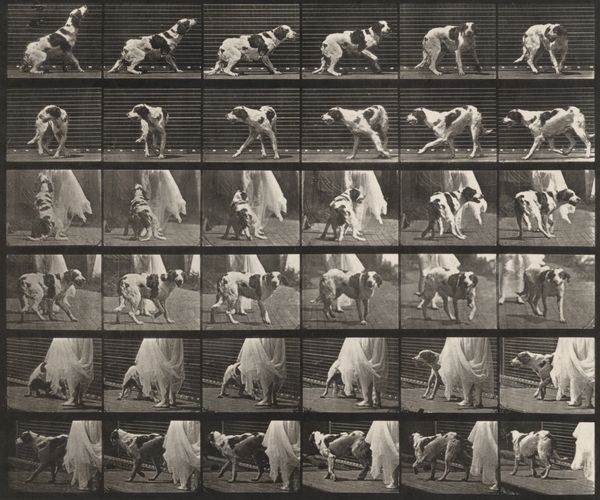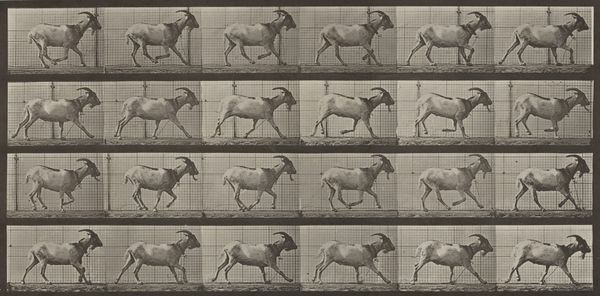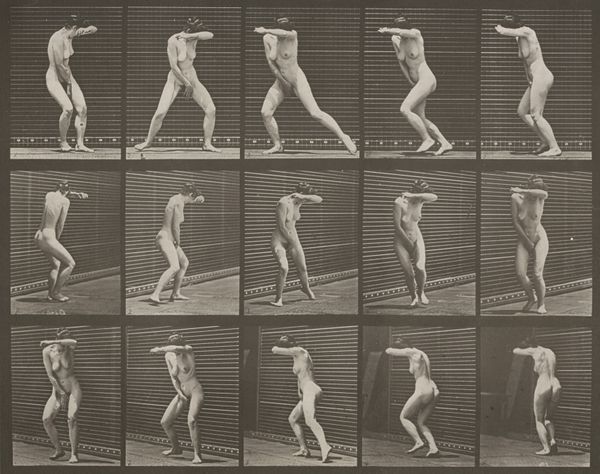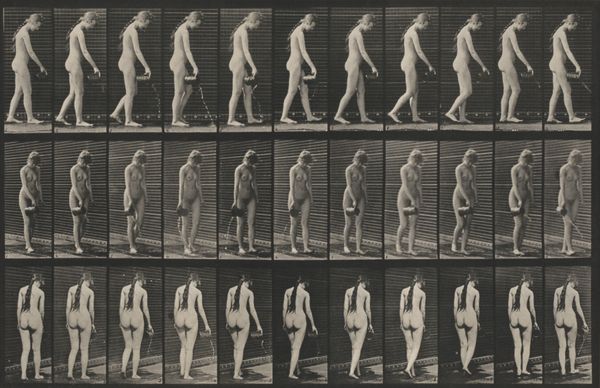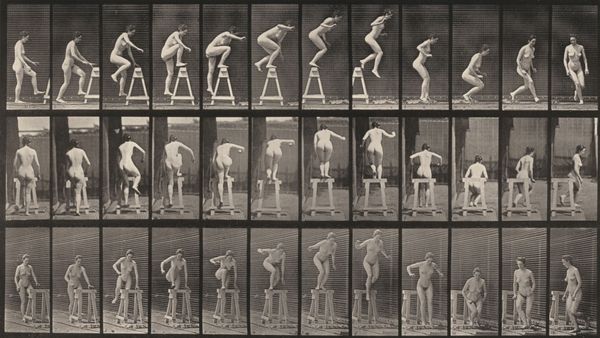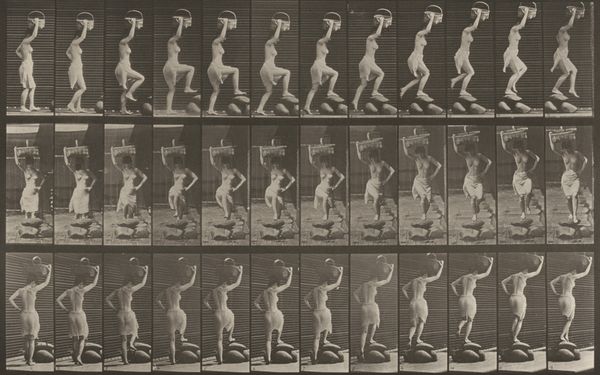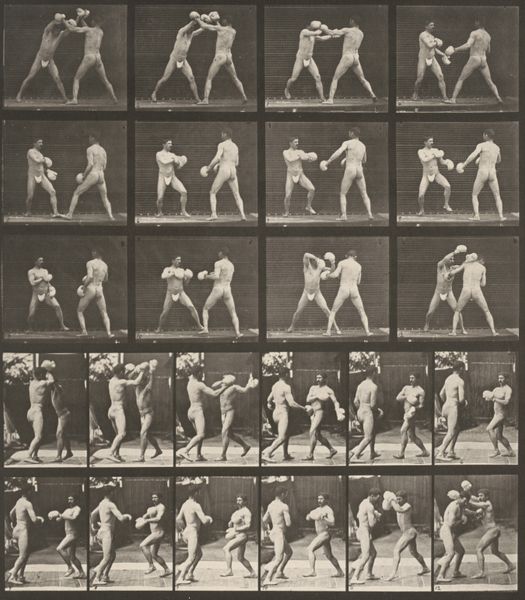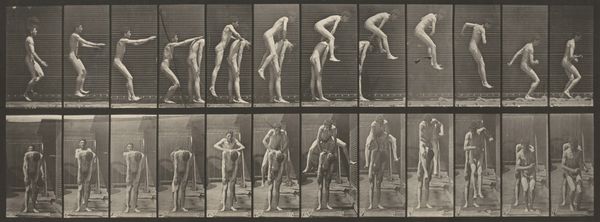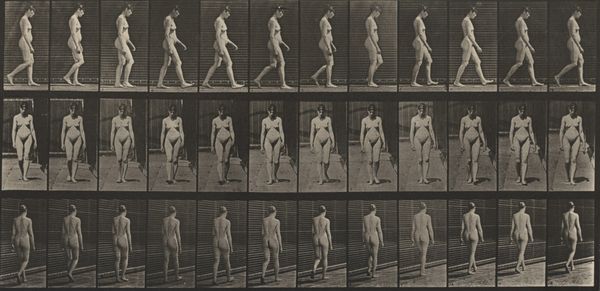
print, photography, photomontage, gelatin-silver-print
#
kinetic-art
#
animal
# print
#
photography
#
photomontage
#
gelatin-silver-print
Dimensions: image: 26.3 × 28 cm (10 3/8 × 11 in.) sheet: 48.26 × 60.96 cm (19 × 24 in.)
Copyright: National Gallery of Art: CC0 1.0
Editor: Here we have Eadweard Muybridge's "Plate Number 705. Dog; trotting; mastiff, Dread," a gelatin silver print from 1887, essentially a photographic study of a dog in motion. It strikes me how much it resembles early animation. What catches your eye? Curator: It’s compelling to consider this print, and others from *Animal Locomotion*, as fundamentally tied to the industrial revolution and its technologies. This isn't just about representing movement; it's about capturing and dissecting it through technological means. Muybridge used a series of cameras, triggered sequentially, right? Editor: That's my understanding, yes! A whole system of wires, triggers and electrically timed shutters. So, what's important about the *method* here? Curator: Well, it directly reflects an increasing societal desire to quantify and control the natural world, reducing motion to a series of discrete, measurable moments. This speaks to the labor invested – not just Muybridge’s but also the assistants and the animals. Also, the print itself. What does mass production, inherent in photographic printing, say about art? Editor: That's a great point. It shifts the focus from individual artistry to a repeatable, almost scientific process. But what does it *mean* to mass produce something considered fine art? Curator: It challenges the very notion of artistic uniqueness and the fetishization of the artist's hand. It suggests art can be democratized through production, though ironically, Muybridge's prints were sold, consumed by the wealthy. Ultimately, this work prompts us to think about art not just as image, but as a material consequence of its production process. Editor: It certainly makes me think differently about photography's role in art and science, especially given the historical context. Curator: Exactly, and questioning assumptions about artistic labor is very powerful in the light of capitalism, technology, and scientific means of production!
Comments
No comments
Be the first to comment and join the conversation on the ultimate creative platform.
